Art & Exhibitions
Italy’s Newest Site for Contemporary Art Is Not a Swanky Architect-Designed Museum—It’s the Charred Ruins of Pompeii
Wael Shawky is the first contemporary artist to create and debut a work on-site as part of the new initiative.
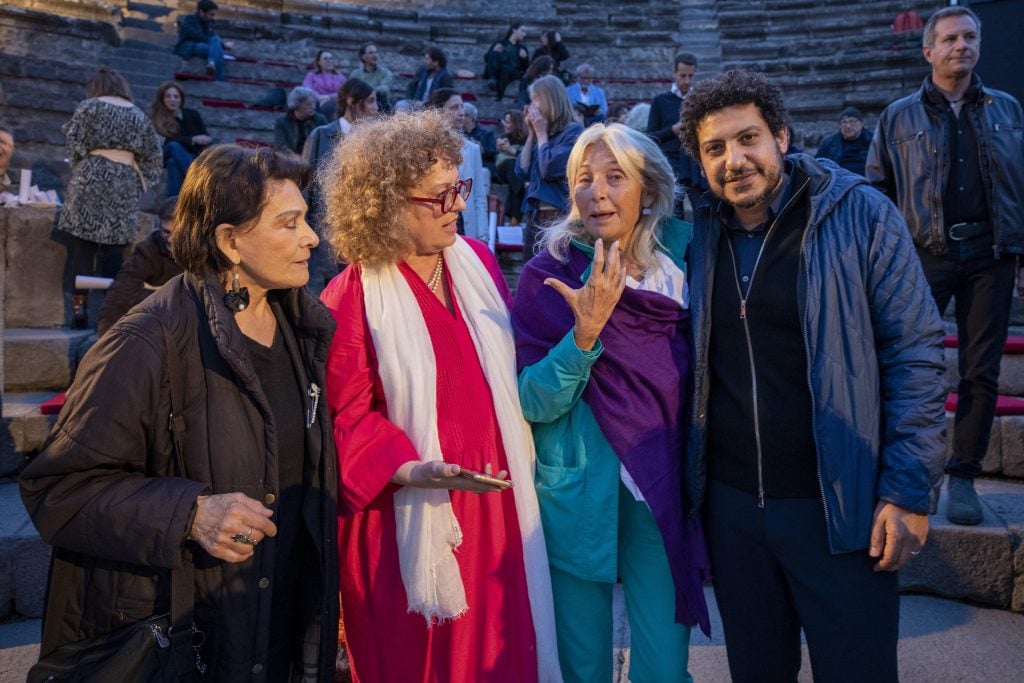
Wael Shawky is the first contemporary artist to create and debut a work on-site as part of the new initiative.

Hili Perlson

On Friday, May 12, curators, art collectors, and politicians gathered at sunset at Pompeii’s Archaeological Park’s small amphitheater, the Piccolo Teatro Odeion, for the premiere of the first work of contemporary art to have been created in situ and presented on location: Wael Shawky’s new film I Am Hymns of the New Temples.
The event launched the historic site near Naples as a magnificent new spot for contemporary art. The ancient city of Pompeii, buried under volcanic ash in 79 AD in the violent eruption of Mount Vesuvius and rediscovered in 1748, is known as a popular tourist magnet of an archeological site. Now, it’s also the latest addition to Italy’s growing landscape of cultural heritage institutions commissioning and exhibiting contemporary art.
Launched in late 2020, Pompeii Commitment is a one-of-a-kind program established by the Archaeological Park of Pompeii and the Italian Ministry of Culture that commits, as its name suggests, to presenting new ways of contextualizing the ruins of Pompeii, a UNESCO World Heritage Site with 2.5 million visitors annually. The program acknowledges the site as a rich source of inspiration and material for contemporary artistic endeavors that has remained largely untapped.
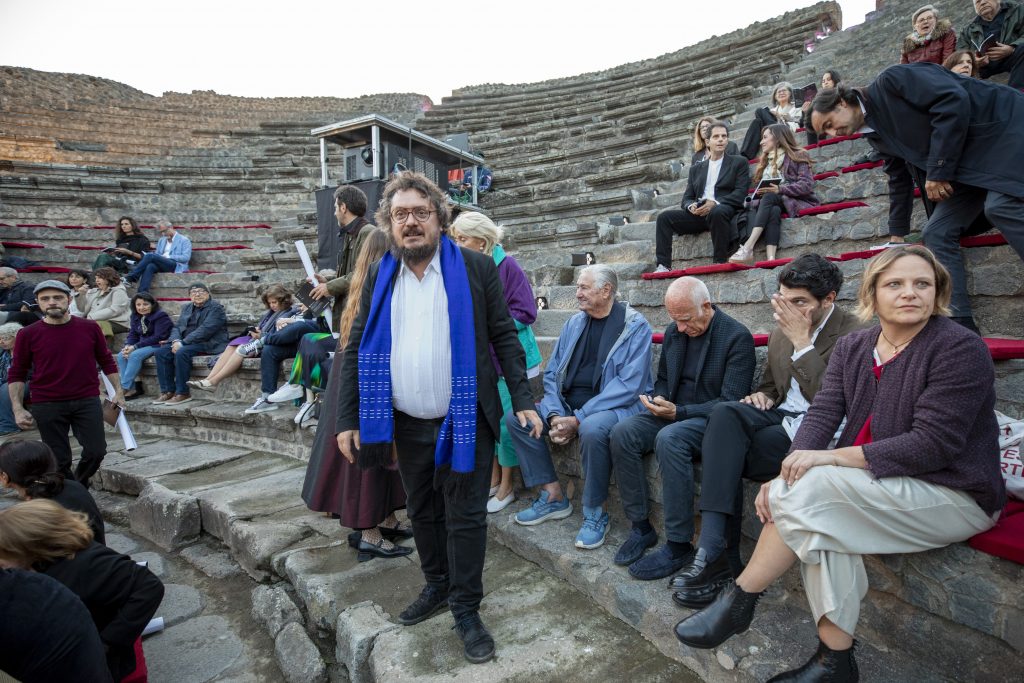
Andrea Viliani, creator and co-curator of “Pompeii Commitment: Archaeological Matters”, at the Archaeological Park of Pompeii. Photographer: Amedeo Benestante. Courtesy Pompeii Commitment
The initiator and co-curator of Pompeii Commitment is the visionary Andrea Viliani, who is also in charge of steering Rome’s newly reopened Museum of Civilizations away from its problematic colonial legacy and towards a radical and progressive engagement with its collection. Viliani previously headed Naples’ Madre museum, the contemporary art museum of the southern Italian region of Campania, where Pompeii is located, and had already started laying the foundations for the Pompeii initiative during his tenure there.
Active since its inception in 2020, the contemporary art program Pompeii Commitment has so far introduced several digital contributions by artists including Anri Sala, Alison Katz, Rose Salane, and Miao Ling, with upcoming digital fellowships and productions by Legacy Russell, Formafantasma, and Sissel Tolaas in the pipeline.
“You’re about to see a masterpiece,” gallerist Lia Rumma told me earlier that afternoon during a small gathering at her art-filled Naples residence with views of the islands of Capri and Ischia. The veteran dealer has been working with the Egyptian artist Wael Shawky since 2018, and supported the production in Pompeii.
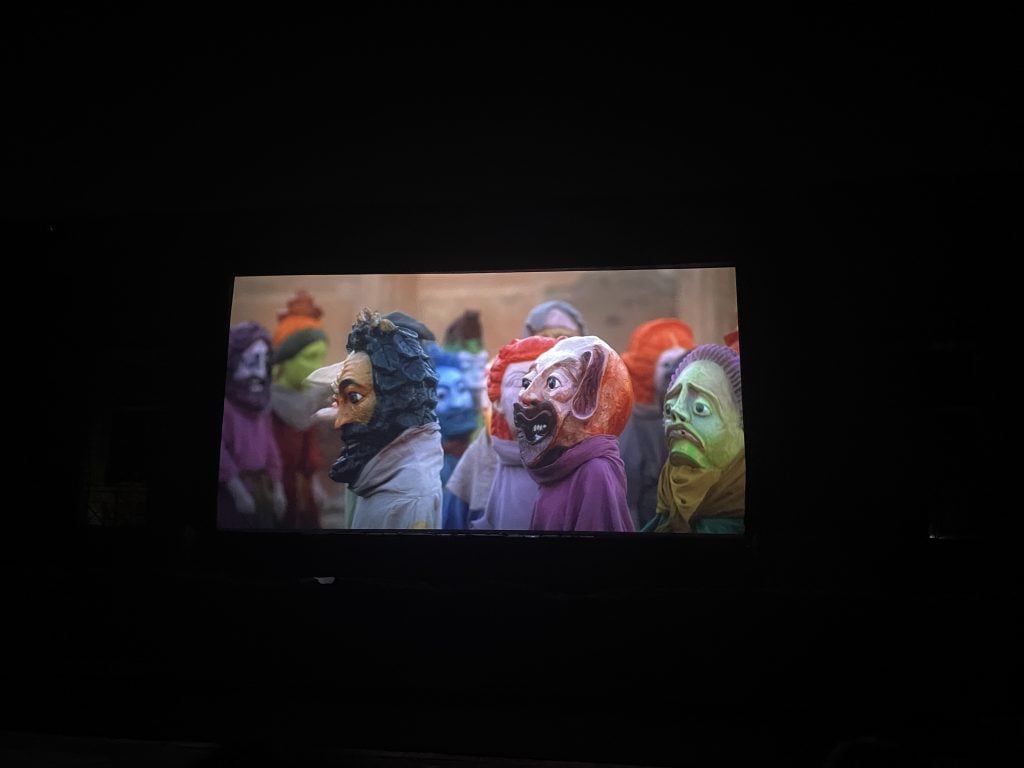
Still of I Am Hymns of the New Temples by Wael Shawky. Photo: Hili Perlson
Sébastien Delot, the director and curator of the LaM museum in Lille, France, also chimed in to tell me that he wasn’t going to pass on the opportunity to be involved with Shawky’s new production: “As soon as I heard is was happening, I raised additional funds.” The approximately one-hour long film I Am Hymns of the New Temples will be on view at Lille’s contemporary art museum later this year. Carlolyn Christov-Bakargiev, the director of Castello di Rivoli Museo d’Arte Contemporanea and Fondazione Francesco Federico Cerruti in Turin, arrived at the luncheon with a literal bang, as a gust of wind suddenly rose from the Tyrrhenian Sea and blew the front door shut, shattering its milk glass panels just as she walked in.
Christov-Bakargiev is largely to be credited as the curator who brought Shawky’s ambitious practice to a wider audience when she included the first of his three-part epic Cabaret Crusades in Documenta 13, which she curated in 2012 in Kassel and Kabul. There, and in the ensuing two chapters, Shawky presented events and traditions connected to Egypt and the Middle East while questioning unresolvable contrasts of narratives—for example, in looking at the Crusades from an Arab historiographic perspective and using marionettes to portray historical characters.
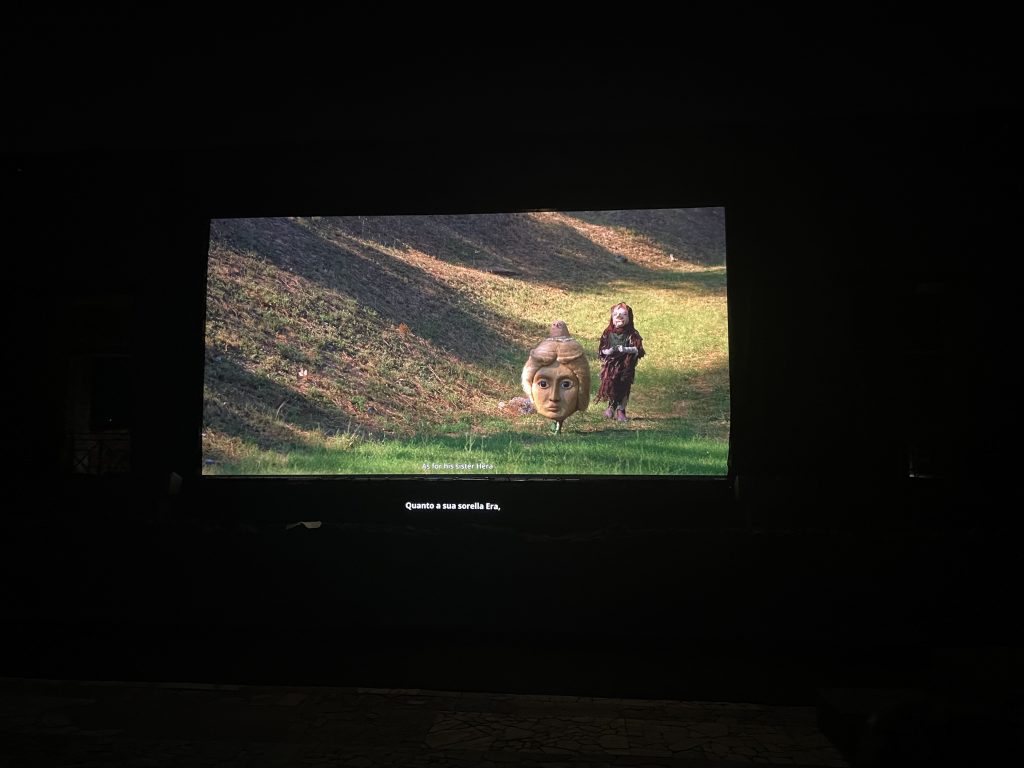
Still of I Am Hymns of the New Temples by Wael Shawky. Photo: Hili Perlson
The new work I am Hymns of the New Temples continues his research into Greek and Roman mythology and how it corresponds to and overlaps with ancient Egyptian cults and traditions. After all, not only temples dedicated to Greek and Roman gods were excavated in Pompeii; the Temple of Isis, dedicated to the Egyptian goddess, with all its stuccoes, states, and frescoes, was discovered there in the 17th century.
As the sun slowly set behind the ruins, and guests including collector Nicoletta Fiorucci, artist Adrian Paci and his wife Melissa, and politicians such as Massimo Osanna, director-general of all public museums run by Italy’s ministry of culture, took their seats in the ancient stone theater, Viliani and Christov-Bakargiev invited Shawky to talk about the film until the night grew dark enough to start the screening.
“I wanted to take out the acting,” Shawky said when asked about his use of puppets in earlier works and elaborate masks in this new production. Here, Shawky uses real-life actors, but all wear ceramic masks designed by the artist and made by the ceramist Pierre Architta and the workshops at the San Carlo Theatre and the Fine Arts Academy in Naples. To complete the characters’ lavish, fantastical appearance, Shawky thought up costumes made of ancient San Leucio silks and other fabrics made by historical Italian textiles manufacturers.
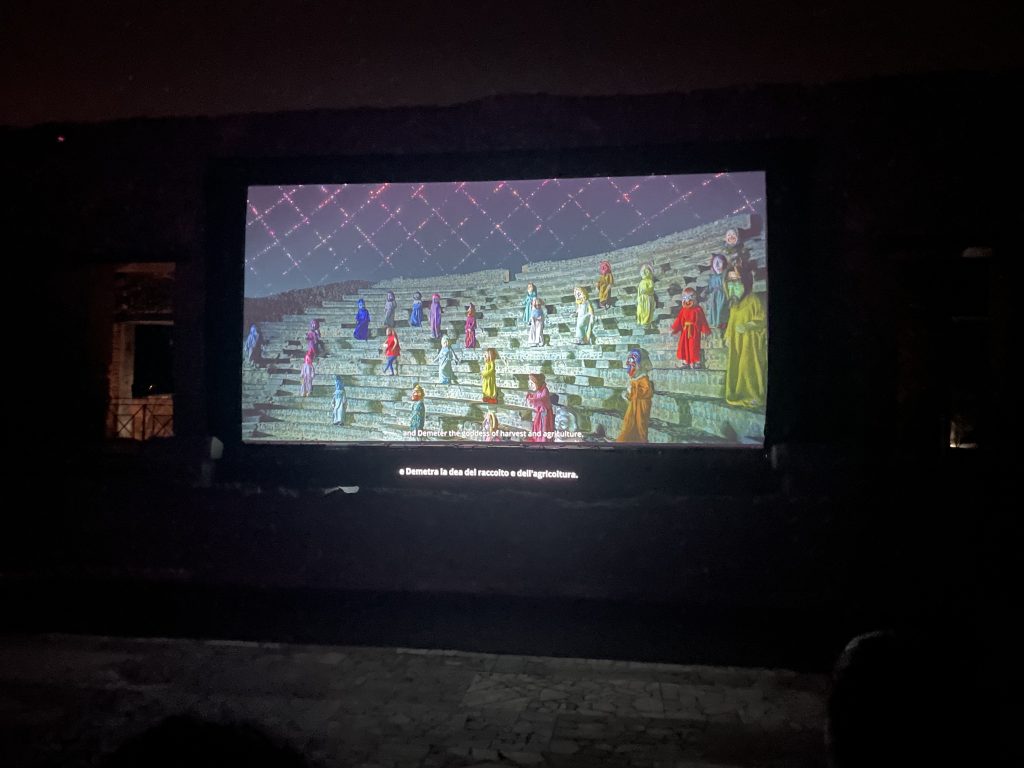
Still of I Am Hymns of the New Temples by Wael Shawky. Photo: Hili Perlson
The film, which turns into a musical at times, is narrated entirely in Arabic, and takes the viewers through an abbreviated whirl-wind fable about gods, titans, giant cyclopes, demigods, and men. The colorful, almost psychedelic scenes filled with magical figures and animals were shot on-site in the small Odeon, the Praedia of Giulia Felice, the House of the Orchard, the Necropolis of Nocera Gate and the Basilica, the Temple of the Genius Augusti, and the Temple of Isis. There’s a hippopotamus and a crocodile as well, in reference to the murals of the Nile found in Pompeii that feature the semiaquatic animals. It’s a creation story that ends, much like the site that inspired it, with a natural catastrophe.
“I question history, myths, and stories as a human creation,” Shawky told me after the screening. “My films always try to put everything on top of each other and deal with it, not in a cynical way, but in a very serious, precise degree. Not to the effect that you will really believe the stories, but you will believe and question them at the same time.”
One of the many myths he attempts to unpack with this work is the common understanding of Pompeii in the Arab world as a type of Sodom and Gamora that was destroyed as punishment, and rediscovered as a warning to us all. “For most of the Muslim or the Arab world, they consider Pompeii as the example of the city of sins,” he added. “This is not part of the Islamic mentality, but it’s part of the Quran that there were many other cultures which fell into sin and corruption and were destroyed by God. That’s one of the stories I want to question here.”
More Trending Stories: